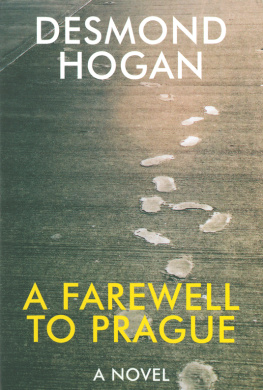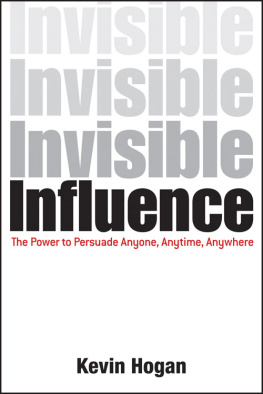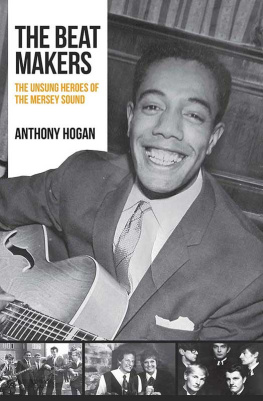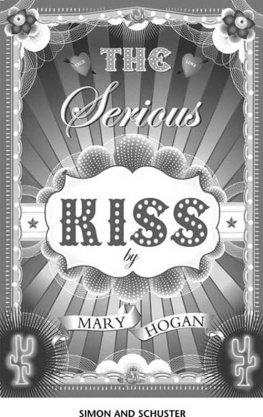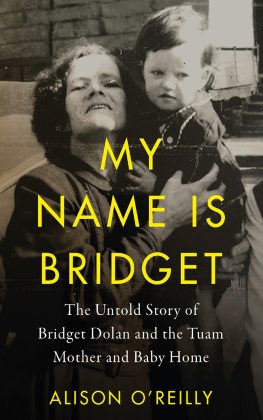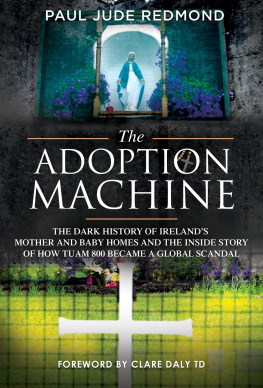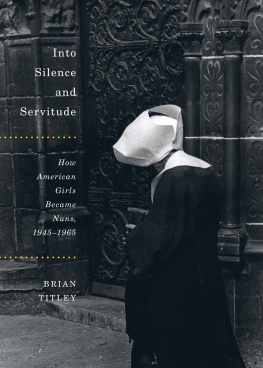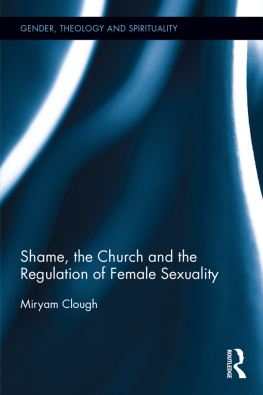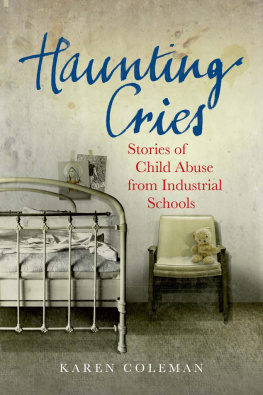Caelainn Hogan
REPUBLIC OF SHAME
Stories from Irelands Institutions for Fallen Women

PENGUIN BOOKS
UK | USA | Canada | Ireland | Australia
India | New Zealand | South Africa
Penguin Books is part of the Penguin Random House group of companies whose addresses can be found at global.penguinrandomhouse.com.

First published 2019
Copyright Caelainn Hogan, 2019
The moral right of the author has been asserted
Cover design: Estuary English
ISBN: 978-1-844-88446-9
This ebook is copyright material and must not be copied, reproduced, transferred, distributed, leased, licensed or publicly performed or used in any way except as specifically permitted in writing by the publishers, as allowed under the terms and conditions under which it was purchased or as strictly permitted by applicable copyright law. Any unauthorized distribution or use of this text may be a direct infringement of the authors and publishers rights and those responsible may be liable in law accordingly.

1.
Tea in the Provincial House
In the bleak first hours of a new year, the park across from the house where I grew up was empty and wild in the darkness. There had been an unholy family row, a sour beginning, and my mother had suggested we go and walk it off. The dogs dived ahead, and as we strolled through the wet grass at the strangest of hours, possibilities blossomed in the biting air and we could breathe again.
The paths and fields of The Rockies as locals call Rockfield Park were so familiar that my feet walked them without my mind having to pay any attention. As students in the navy uniforms of Guardian Angels, the primary school that borders the park, we had potato and spoon races in the fields. On the steps that lead into the park from the school, we would often pass young people sitting hunched together, wreathed in cigarette smoke, cans occasionally crackling in their fists. Soon enough it was my friends on the steps and crouched under the monkey puzzle tree, drinking naggins in the damp summers, kissing boys in the grass. The local priest, Father Gaughan, was often to be seen sashaying through the park in his dramatic black soutane and white collar. In darkness, the scent of foxes behind the park walls drove our mongrel terrier mad.
As my mother, my younger brother and I walked, we could see a high wall on the flank of the park. Set into the wall were a narrow gate and a little electronic keypad; mounted on a pole behind the wall was a CCTV camera. Through the bars of the gate, we could spy a stately blush-pink building surrounded by manicured slopes and gardens. I knew vaguely that the nuns lived in there, but I couldnt have said what order they belonged to or what they did. I dont remember ever seeing any of them. And, although I had passed it many times, I had never noticed the name on the pillars of the main gate, facing the busy road on the other side of the park: Daughters of Charity.
A few years after that New Year walk with my mother, I found myself strolling up the winding lane that leads to that blush-pink building, on my way for tea with the provincial head of the Daughters of Charity. In the preceding months, I had learned a few things about this part of Dublin, Blackrock, and about the Daughters. I knew, for instance, that the order had purchased part of the Rockfield Estate a few years after the establishment of the Irish Free State. I knew too that the Daughters had for many decades operated St Patricks Home on the Navan Road in Cabra: the largest mother-and-baby home in Ireland, a place where women pregnant out of wedlock went to give birth in secret.
And we all knew, by then, about the findings of Catherine Corless, a local historian in Tuam, Co. Galway. Her research on the mother-and-baby home run by the Bon Secours Sisters from 1925 to 1961 in Tuam had determined that there were nearly 800 children who had died while inmates of the institution but for whom no burial records could be found. Corless hypothesized that at least some of those children had been buried in what seemed to be a sewage tank, in the grounds of the institution. Her findings made international news in 2014, and the State established a Commission of Investigation into the mother-and-baby homes the following year.
The women of the religious orders, once held in reverence, were now widely seen as cruel, and bitter about their waning influence. Despite this, or perhaps because of it, I worried about what I was wearing, whether I would look respectable to Sister Goretti Butler in jeans and boots. The buzzer by the door of the main house made a dull ringing inside, while I peered at the lawns and gardens behind the wall that I had only ever glimpsed through the bars of the narrow gate.
Sister Goretti came to the door alone and ushered me into a cosy room to the side, with faded blue armchairs and a wooden cross on a lace-covered table. She disappeared for a minute and then hurried in with a tray of tea and biscuits, settling herself beside me, dressed in a simple cardigan and a long skirt. It felt like visiting a grandparent.
I had first met Goretti earlier that month, in the church across from my house. She had been part of a procession celebrating four centuries of the Vincentian order in a packed church, carrying a Bible aloft towards the altar. Now she sat beside me, the gold of a Communion box glinting behind her, a lone flourish in the simple room. I dipped a biscuit and wondered if Goretti would attempt to measure the degree to which my Catholicism had lapsed.
I was determined to get one thing out in the open: my mother and father had been unmarried when I was born, and my fathers parents didnt speak to them for a while because of it. I didnt mention the two abortions my mum chose to have before she gave birth to me. For her part, my mother had never mentioned the abortions to me until, amidst the whir of debate generated by the Repeal campaign, I asked. The inside of my mothers left forearm is covered in flower tattoos and she doesnt go to Mass. She was never afraid to stand out or to tell a stranger about her life. But even though Id helped her put up posters supporting Repeal, she had been worried I would judge her.
She had the first abortion as a teenager growing up in the US. The Planned Parenthood clinic calmly presented the options and respected her decision. Her mother, not really knowing what else to do, brought her sweets afterwards. The second time was in the mid-1980s, after shed moved to Ireland and not long before she met my father. She didnt feel ready to become a mother, and so she travelled to England for an abortion. She had to fly home to Dublin the same day and go straight to work waitressing tables in a nightclub. My father, worried about what people might say, didnt want me to write about it at first. Theres still shame.
I was born in November 1988, fully breach, my legs snapping out with such force that my hips were dislocated. If Id been born just a year earlier, I would have been an illegitimate child under Irish law. The Status of Children Act, passed in 1987, abolished the legal concept of illegitimacy.
After my mother became pregnant with me, my father suggested that they get married. She agreed but she wouldnt walk down the aisle for that reason alone, and at her insistence they were not married until after I was born. My mother was four or five months pregnant on the day when they showed my fathers parents her engagement ring and broke the news that she was having a baby. My fathers mother struggled with the idea. She went to Mass every Sunday, but I dont remember her being extreme about religion. She was, it seems, mainly worried about what the neighbours would think. At one point, in shock, she told my parents it was the worst thing that had ever happened to her, and that she would never be able to show her face again. When I was born, though, she doted on me.



